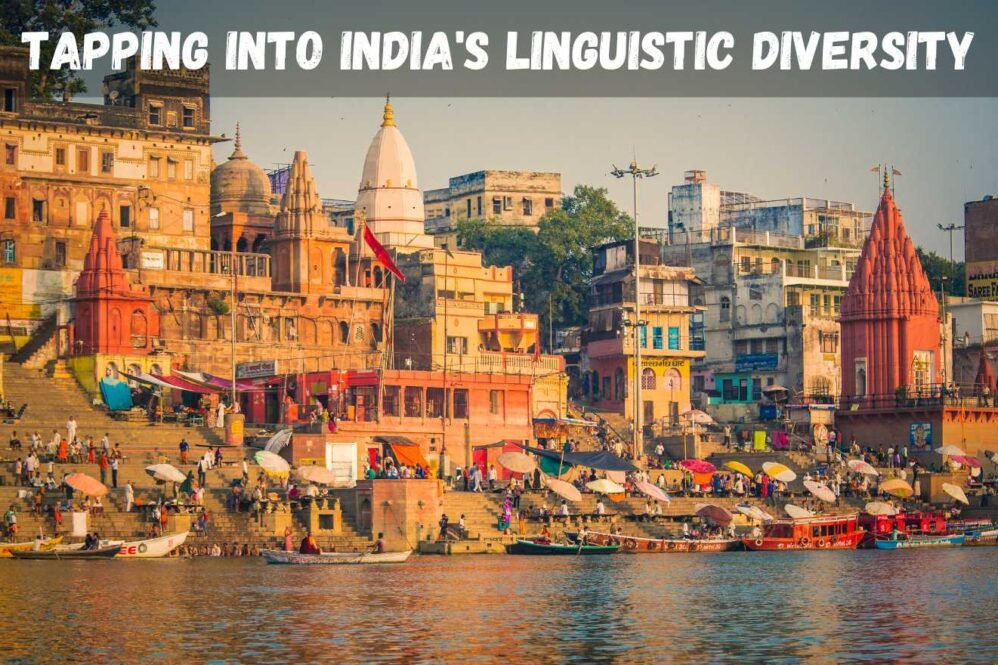India is home to hundreds of local languages and dialects. Per the latest census, there are 22 officially recognized languages, written in 13 different scripts. Beyond this, there are over 700 languages and dialects spoken across the country.
Table of Contents
In recent years, India has seen a surge in regional language internet users. As affordable smartphones and cheap data plans spread to small towns and villages across the country, more and more people are accessing the internet in local languages. 9 out of 10 new internet users prefer their native tongues online.
This rise of vernacular internet users has led to a growing demand for content writing in regional languages. Whether it is news, entertainment, government schemes, or day-to-day information – people are now expecting content in their mother tongues.
This presents a huge opportunity for freelance writers and content creators comfortable writing in regional languages. As media houses, edutech startups, e-commerce firms and more scramble to create vernacular content, skilled writers can position themselves to cater to this demand. From blog posts to video scripts, and social media captions to white papers – there is a world of freelancing opportunities opening up for those proficient in local languages.
Language Diversity in India
India is an incredibly diverse country with over 22 major languages recognized by the Constitution, along with hundreds of regional and minority languages and dialects. While English remains the language of business, education and politics in much of urban India, the reality is that not everyone speaks or understands English well.
According to the 2011 census, the total number of India’s non-English speakers exceeds 80% of the population. Hindi is the most widely spoken language with nearly 44% of Indians listing it as their mother tongue. However, India has no true national language, and states conduct their official business in their respective state languages. For example, Malayalam in Kerala, Marathi in Maharashtra, Punjabi in Punjab, and so on.
Beyond the 22 constitutional languages, India is estimated to have over 780 different languages and 66 different scripts. Linguistic diversity varies greatly by region, with some states having a dominant state language spoken by the majority, while others have multiple major languages. This rich linguistic diversity reflects India’s regional cultures and identities.
Rise of Internet Users – Regional and Local Languages
India has seen rapid growth in internet adoption over the last decade, fueled by affordable smartphones and mobile data plans. However, a significant portion of these new internet users prefer content in their native languages rather than English.

Recent studies found that nearly 60% of urban Indian internet users consume content primarily in a regional language. This stems from multiple factors:
- Higher literacy rates in native and local languages compared to English, especially among rural populations and women
- Ease of comprehension in one’s first language
- Cultural affinity towards regional and local languages
- Availability of fonts and input tools in local scripts
Indic language internet users are projected to account for nearly 75% of India’s user base by 2021. The top languages on the Indian internet today include Hindi, Bangla, Marathi, Tamil, Telugu, Gujarati, Kannada and more.
Vernacular internet users are driving demand for all kinds of content in local languages – news, entertainment, social media, government services, and more. This presents a major opportunity for content creators fluent in regional languages.
Government Support for Local Languages
The central and state governments in India have enacted various policies and initiatives to promote the usage of local languages and ensure access to public services in multiple languages.
Some key government efforts include:
- Bhasha Vibhag – This department established by the Ministry of Education is dedicated to the promotion of Indian languages. It oversees research, development and modernization projects for Indian languages.
- Three-Language Formula – The government follows a three-language formula in schools, which includes Hindi, English and a regional language native to each state. This helps expose students to multiple languages from a young age.
- Official Languages Act – This act declares Hindi and English as official languages for government work. It also requires states to adopt a regional language for official purposes. Government documents, public notifications, administrative orders etc. must be published in the state’s official language.
- Public Services – Central and state governments are required to provide services like public transportation announcements, hospital signage, government websites etc. in multiple languages. Many documents such as passport applications are available in regional languages.
- Promotion of Literature – Initiatives like the Sahitya Akademi Awards recognize authors who write in 24 regional languages. Government cultural organizations promote regional language literature, arts and festivals.
Overall, the government’s language policies and initiatives aim to make public services accessible to all while preserving the diversity of languages in India. This creates opportunities for writers proficient in local languages to provide translated content for both the public and private sectors.
Growing Demand for Vernacular Content
The rapid rise of regional language internet users in India has created a growing demand for vernacular content across various sectors and industries.
Media and Entertainment
Media companies are now producing more films, TV shows, music, and other content in regional and local languages to cater to local audiences. For example, over 50% of films released in India are not in Hindi anymore. Streaming platforms like Netflix, Amazon Prime, Hotstar, and others are actively acquiring and producing content in Tamil, Telugu, Marathi, Malayalam and other local languages.
Education
Ed-tech companies and educational publishers are creating learning and teaching materials for students in local languages. There is a high demand for writers who can create educational content, assessment material, textbooks etc. in regional languages.
Marketing
As companies focus on Tier 2 and 3 cities, they require marketing communication in regional and local languages. This includes the translation of ads, websites, brochures and more. FMCG brands like HUL actively advertise in local languages tapping into regional markets.
News and Journalism
While English newspapers have limited circulation, regional and local language newspapers and magazines have seen tremendous growth. There is a need for writers who can produce news reports, articles and analysis in the local language for such publications.
Digital Content
With the surge of Indian language internet users, technology platforms like Google, Facebook, Amazon, and Flipkart are expanding language offerings. There is increased demand for writers to produce reviews, explainers, tutorials, lists and other digital content in regional languages.
Opportunities for Freelance Writers
India is home to hundreds of local languages, making it an ideal market for bilingual and multilingual writers. The rise in regional language internet users and demand for vernacular content has created new opportunities for freelance writers fluent in English and one or more Indian languages.
Writers skilled in English and local languages like Hindi, Bengali, Marathi, Tamil, Telugu, Gujarati, Kannada, Malayalam and Punjabi are in high demand. They can offer a diverse range of freelance services like:
- Translation – Convert content from English to regional languages and vice versa. Growing need for translation of marketing campaigns, websites, apps, documents and more.
- Transcription – Transcribe English or regional language audio/video files into text. Useful for subtitling, research, and generating transcripts.
- Content Creation – Write, edit and proofread content in English or Indian languages. This includes blog posts, social media posts, articles, white papers, newsletters and more.
- Localization – Adapt existing English content into regional languages based on local context and cultural nuances. Help global brands connect with Indian language users.
- Revision – Review and refine machine-translated or poorly translated content into more natural, engaging language.
- Multilingual Writing – Produce parallel content across multiple Indian languages along with English. Helps maximize reach across language markets.
So writers proficient in English and one or more Indian local languages have a major advantage in serving the surging demand for Indic language content and services. Building a diverse writing portfolio across languages can open up many rewarding freelancing opportunities.
Building a Regional Language Portfolio
As a freelance writer looking to capitalize on the demand for vernacular content, building a diverse portfolio is key. Here are some tips for showcasing your expertise in regional languages:
Create Writing Samples in Target Languages
- Have 3-5 published samples per language. Articles, blog posts, product descriptions etc. are great additions.
- Samples should demonstrate language proficiency, research skills and ability to create engaging content for different purposes.
- Include samples tailored to different niches like technology, finance, health etc. Show versatility.
- Translate some English samples to regional languages. This highlights adaptation skills.
- Use quality translation tools and native editors to ensure error-free language samples.
Find Clients Seeking Regional Language Experts
- Many startups and SMBs are launching vernacular initiatives. Contact them directly.
- Look for translation agencies and content firms focused on Indian languages.
- Leverage freelancing sites and content marketplaces that have robust regional content demand.
- Network with other regional language freelancers for leads and collaborations.
- Reach out to NGOs, and non-profits working to promote Indian languages and offer discounted services.
- Consider working with publications like magazines, and newspapers publishing regional content.
By actively building a diverse writing portfolio and tapping into the growing market for vernacular content, freelancers can establish themselves as experts in this domain.
Pricing and Pay for Vernacular Writing
One of the biggest advantages of writing in regional languages is the potential to earn higher rates compared to English content. As the demand for vernacular content grows, freelancers with fluency in multiple Indian languages can often command premium pricing.
For starters, there is far less competition in regional language writing pools. Whereas English content has a vast global supply of writers willing to work for low rates, local language creators are still relatively scarce. With fewer writers available, freelancers can ask for higher per-word or hourly rates.
Additionally, specialized knowledge and linguistic skills enable freelancers to provide unique value to clients. For instance, a writer proficient in both Tamil and Telugu could assist a company in creating marketing campaigns tailored to those distinct audiences. Such niche expertise warrants above-average compensation.
Overall, rates for vernacular writing are on the uptick:
- Entry-level regional language writers can earn ₹0.05-0.10 per word, almost double typical English rates.
- Experienced writers fluent in multiple languages often charge ₹0.15-0.30 per word.
- For high-end translation work between languages, per-word rates can reach ₹1 or higher.
With strategic language development and diversification, talented vernacular writers in India can maximize their income potential and differentiate themselves in an increasingly competitive freelance marketplace.
Overcoming Challenges
One of the main challenges that writers may face is the limitations of keyboards and editing tools for some regional Indian languages. Many Indian languages have more characters and diacritics than a standard English keyboard layout provides. Writers may need to use special language keyboards or extra steps to input certain characters. The lack of advanced editing tools in some languages can also pose difficulties for writers. Strategies to overcome this include using Unicode fonts, enabling extra keyboard inputs, or finding editor plugins that support local scripts.
For those writing in languages that are not their native tongue, translating or producing high-quality content can be difficult. Writers should focus on thoroughly researching terminology, using language learning resources, and seeking editor or native speaker reviews. Building a network of local writers, editors or subject matter experts to collaborate with or seek feedback from can be very helpful. Writers should also clearly communicate with clients about their language proficiency level and ensure adequate time for drafting and reviews. With persistence and the right strategies, non-native writers can produce quality work in other South Asian languages. The key is being patient, doing extra research, and not being afraid to ask questions to fill knowledge gaps.
Future Outlook

The future looks bright for freelance writers specializing in regional Indian languages. Here are some key trends to watch:
- Continued growth in demand: As more people come online using native languages, demand for vernacular content will likely keep rising. India is expected to have over 900 million internet users by 2025, many of whom will consume content in local languages. This presents a massive opportunity for freelancers.
- Improving technology: Machine translation and voice technologies are getting better at supporting Indian languages. This can help freelancers be more productive and access a wider audience. As technology removes language barriers, clients may expand content needs.
- New verticals: Vernacular content is needed beyond just entertainment and news. Growth in education, finance, health and other sectors can create specialization opportunities. Freelancers skilled in niche topics and industry terminologies can target valuable niches.
- Evolving media: More regional language options are appearing, especially as video and audio grow. Freelancers can leverage emerging social/digital media, podcasts and more. The possibilities are expanding.
- Wider client base: Startups, businesses, non-profits and government agencies are all potential clients needing vernacular content at scale. Freelancers can diversify beyond just working with publishers and media houses.
The continued proliferation of Indian languages online creates an exciting long-term opportunity for skilled freelance writers. There is tremendous potential to grow and shape this emerging market.




